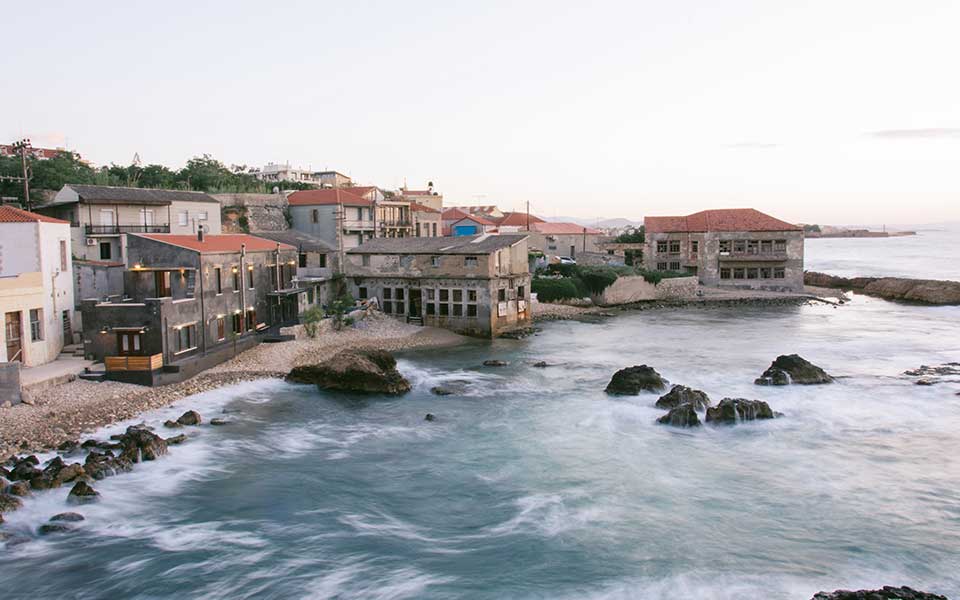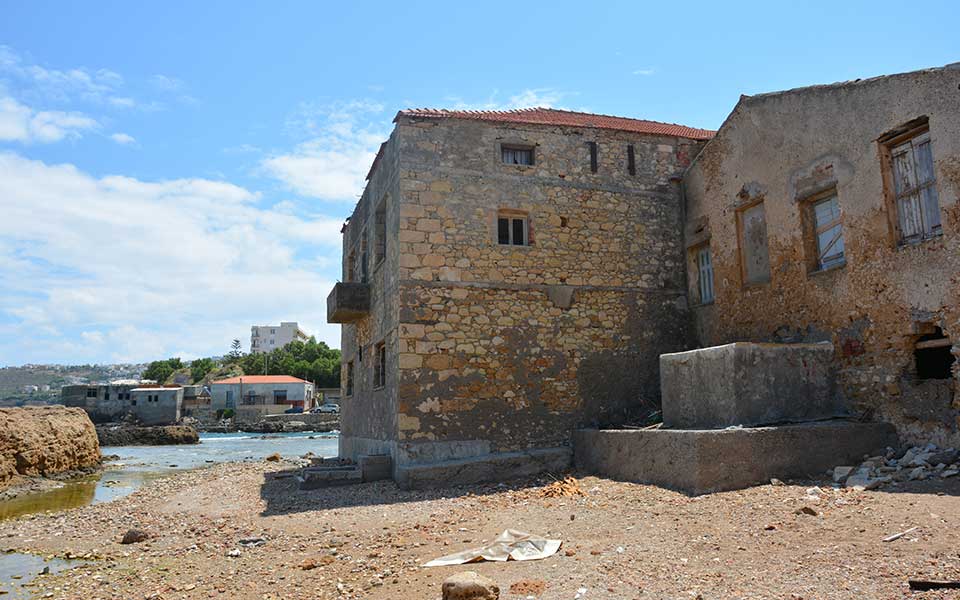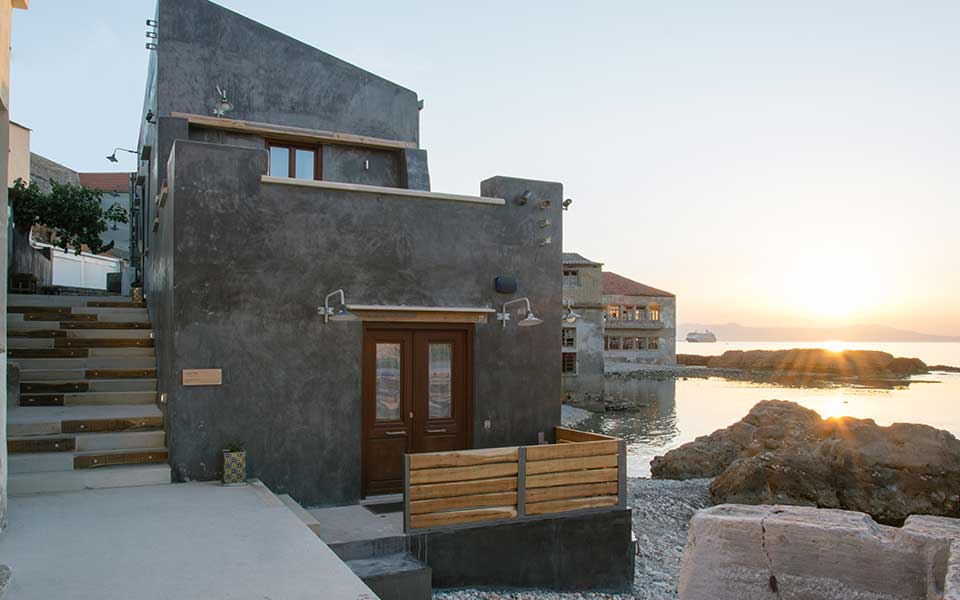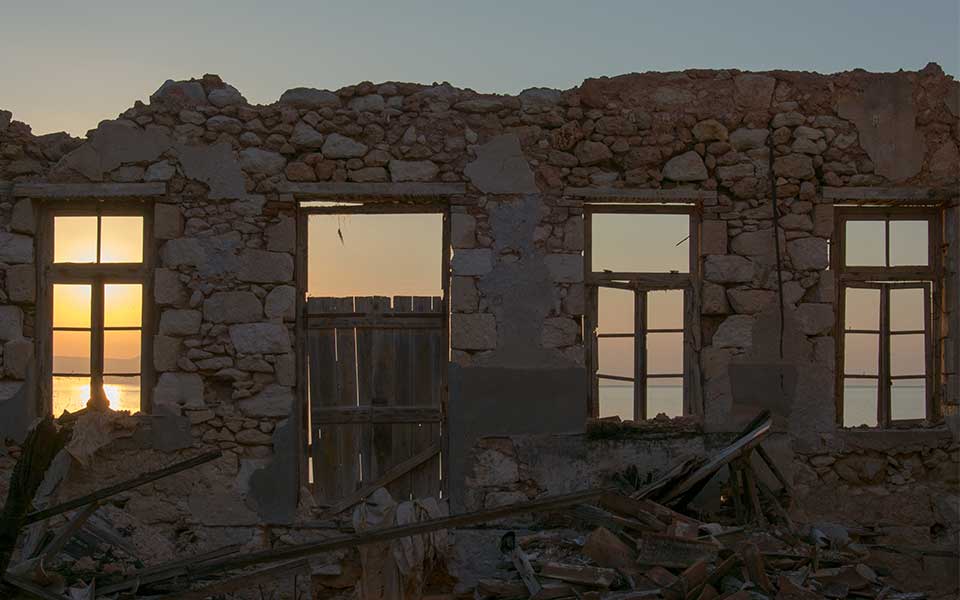It is one of Hania’s most beautiful areas, barely known to visitors, or even to locals. The Tambakaria once comprised the city’s leather tanning district, home to several such enterprises; it was later left abandoned for more than 30 years. However, it has managed to preserve its unique charm almost intact.
Recently, the Greek Ministry of the Environment declared a cluster of seventeen edifices in the area protected buildings. It did so with the aim of not only preserving them, but also bringing life back to this exceptional complex of industrial buildings.
The Tambakaria are situated in the area of Halepa, at the easternmost end of the city of Hania. They consist of a complex of tanneries right on the seafront, made up of two groups of buildings, one on Vivilaki Street and one on Aghia Kyriaki.

“The development of the Tambakaria district began towards the end of the 19th century and the start of the 20th. They were built right next to the sea because people would use seawater in order to process the hides,” explains Michalis Yiannakakis, an architect and urban planner who has been working on the area for the past 20 years.
The once-industrial buildings are stark and solid structures. “Most of the buildings are two or three storeys high: on the ground floor, which is usually low-ceilinged, they featured troughs carved out of stone where the hides would be soaked, limed and washed. The machinery involved in leather production was on the first floor, and the second floor, which in many of the buildings is over 5m high, would be used for storage.
These are inward-looking buildings, with small windows, clean stripped-down facades, and hipped roofs. They are made of stone, and more specifically tufa stone, which repels the seawater. Many of them featured a manually operated lift inside to transport the hides from one floor to another.”

During the 1970s the area began to be abandoned and to fall into disrepair. “Gradually, due to changes in the way that leather was processed, many started to leave the profession,” notes Mr. Yiannakakis. “Today, there are still two tanneries in operation, one in the area of Vivilaki Street, and the other at Aghia Kyriaki, while a third is only partially active. The professionals who still remain behind are tough, rugged men, who foster a deep love for their trade, but also for the area itself.”
Now seventeen buildings in the Tambakaria, in the area of Aghia Kyriaki, have been declared listed buildings by the Ministry of Environment. According to the official declaration, the original outer shells of the original buildings are protected, as well as any later additions to their interiors that are consistent with the buildings’ authentic character and style.
As is customary in such cases, glaringly incongruent additions, awnings, illuminated signs and so forth are forbidden. Yet their potential for development is considerable: the buildings can be transformed into homes, tourist accommodations, offices, cultural venues, and restaurants, or into museum-like spaces, with the option of creating a cafe-bar and museum shop selling handicrafts and other items that are aligned with the traditional purpose and character of the Tambakaria.

“Great Prospects”
A separate cluster of 26 buildings (in the area of Vivilaki Street) were declared listed buildings in 2014. Mr. Yiannakakis purchased, restored and redeveloped one of these into a residence available for rent by tourists.
“In the area of Aghia Kyriaki, nearly a quarter of the buildings have been restored. On Vivilaki Street some of the buildings have been restored over the past few years, and are being redeveloped as boutique hotels. The area is already changing and this indicates its great prospects. In my opinion, characterizing the old tannery facilities as listed buildings increases their value several times over. It makes it possible to rehabilitate them and it contributes towards preserving the area’s authentic character, which is truly unique”.











